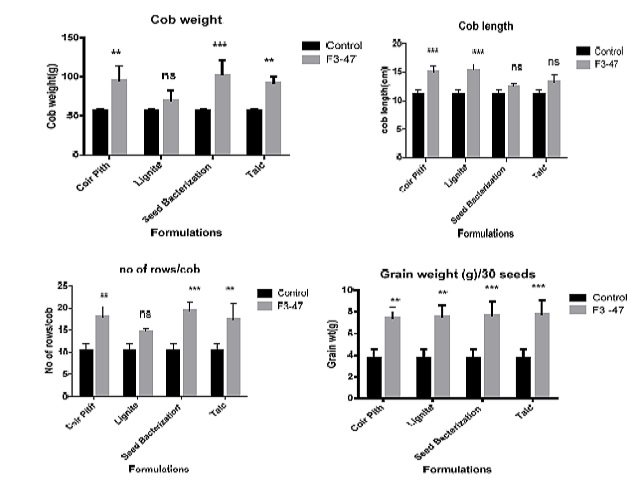Rhizosphere competent Pseudomonas indoloxydans (F3-47) as a plant growth promoter and enhancer of Zea mays L. under greenhouse and field trials
DOI:
https://doi.org/10.5530/ctbp.2021.3s.34Keywords:
Pseudomonas indoloxydans, Seed bacterization, Talc, Lignite, AgricultureAbstract
A rhizospheric bacterium belonging to the genus Pseudomonas isolated from the rhizosphere of maize was evaluated for the plant growth promoting and biocontrol traits. The strain was subjected to the different PGP and biocontrol traits such as ammonia, IAA, siderophores, phosphate solubilisation, ACC deaminase, HCN production, cellulase, pectinase and chitinase activity. 16S rRNA sequencing showed maximum homology with the strain Pseudomonas indoloxydans IPL-1(NR115922). In vivo plant growth promotion assay with the strains on maize seedlings showed a significant increase in the biometric parameters with respect to the number of shoots (32%) and roots (27%) and its fresh weight (20%) and dry weight (54%). Different formulations of the strain tested in fields revealed that the maize plants treated with the talc and lignite formulations showed a considerable increase in the growth of maize when compared to the plants without any treatment. The study concluded that the rhizosphere strains Pseudomonas indoloxydans (F3- 47) could be a potential plant growth promoter for future exploration in agriculture.



